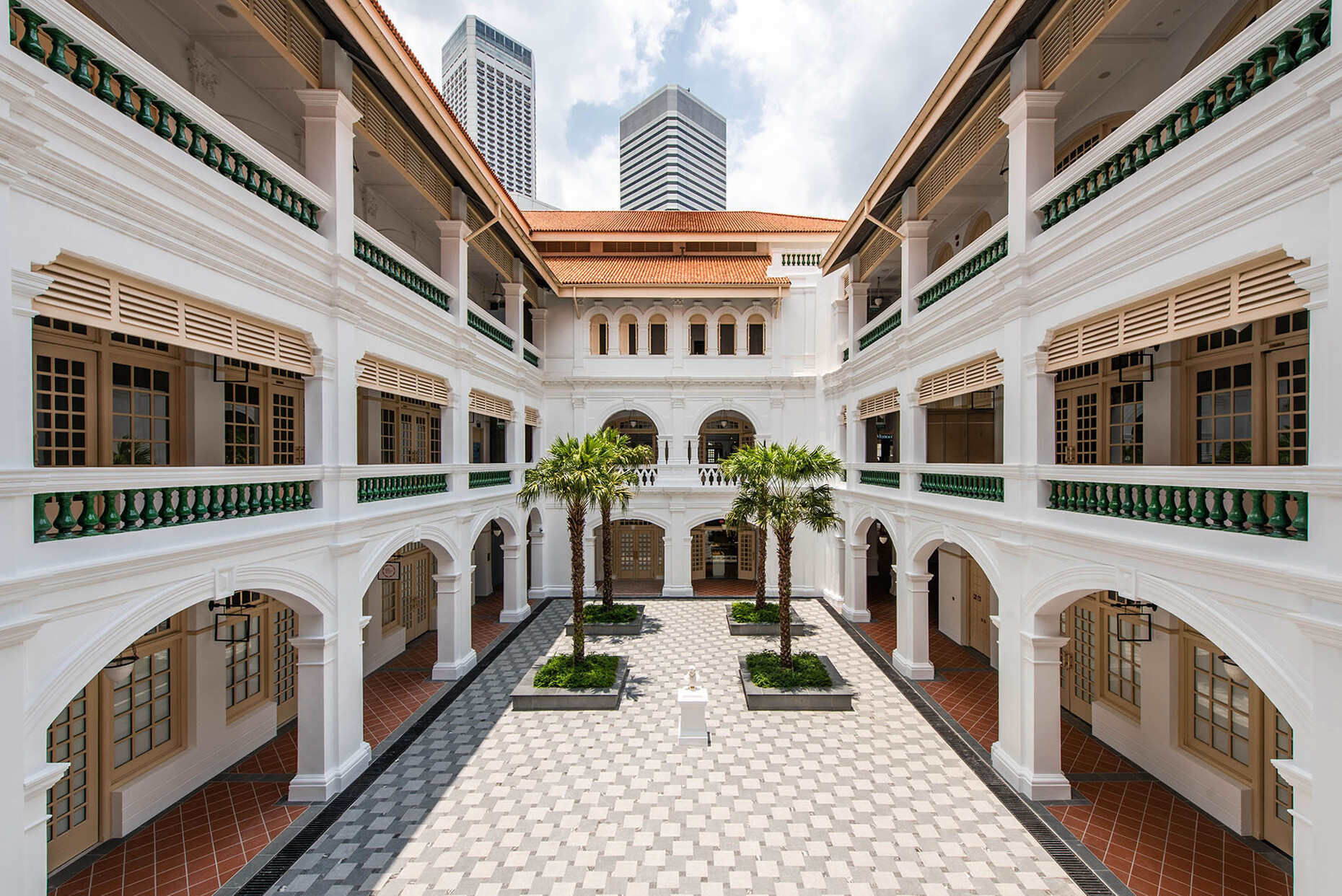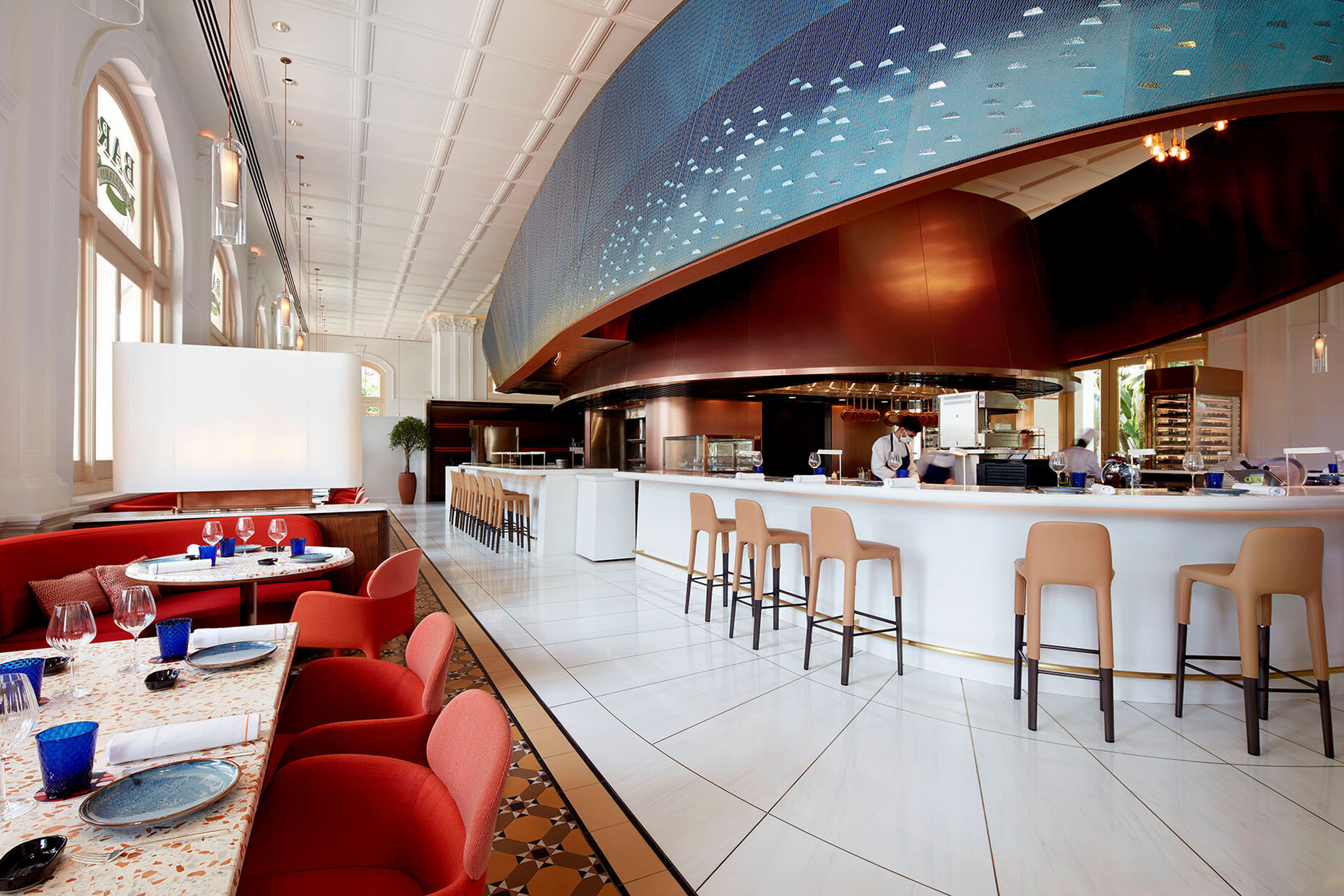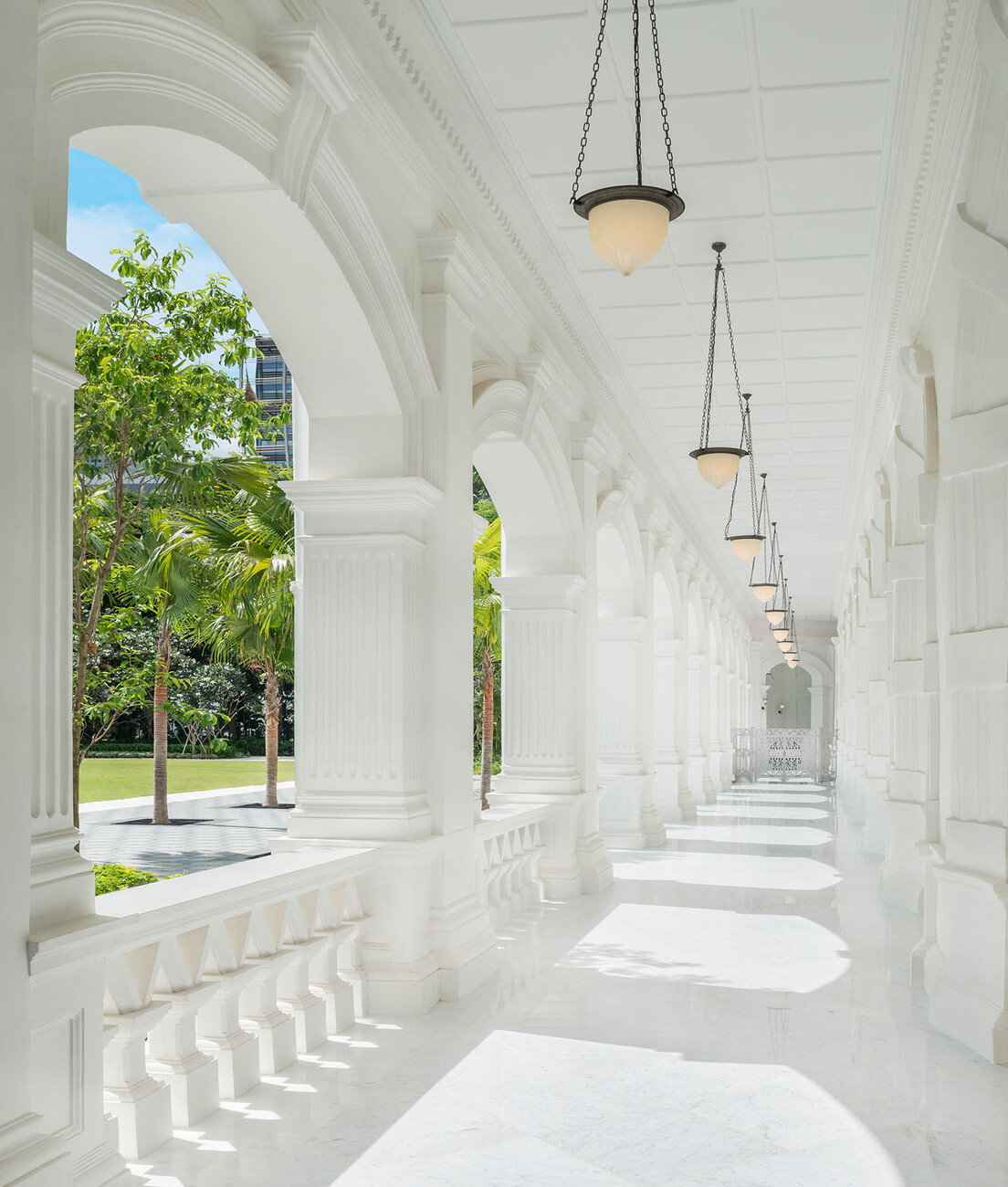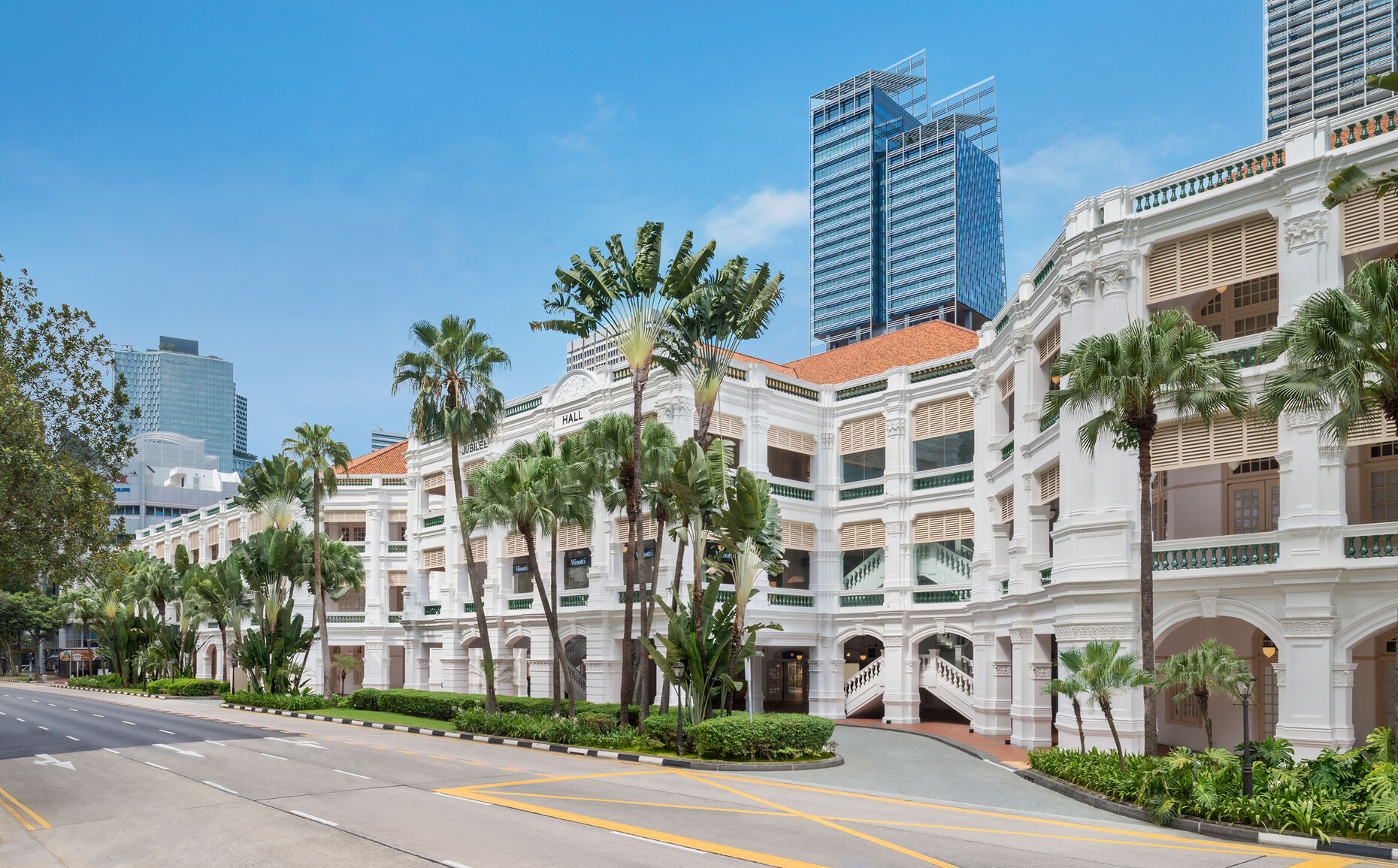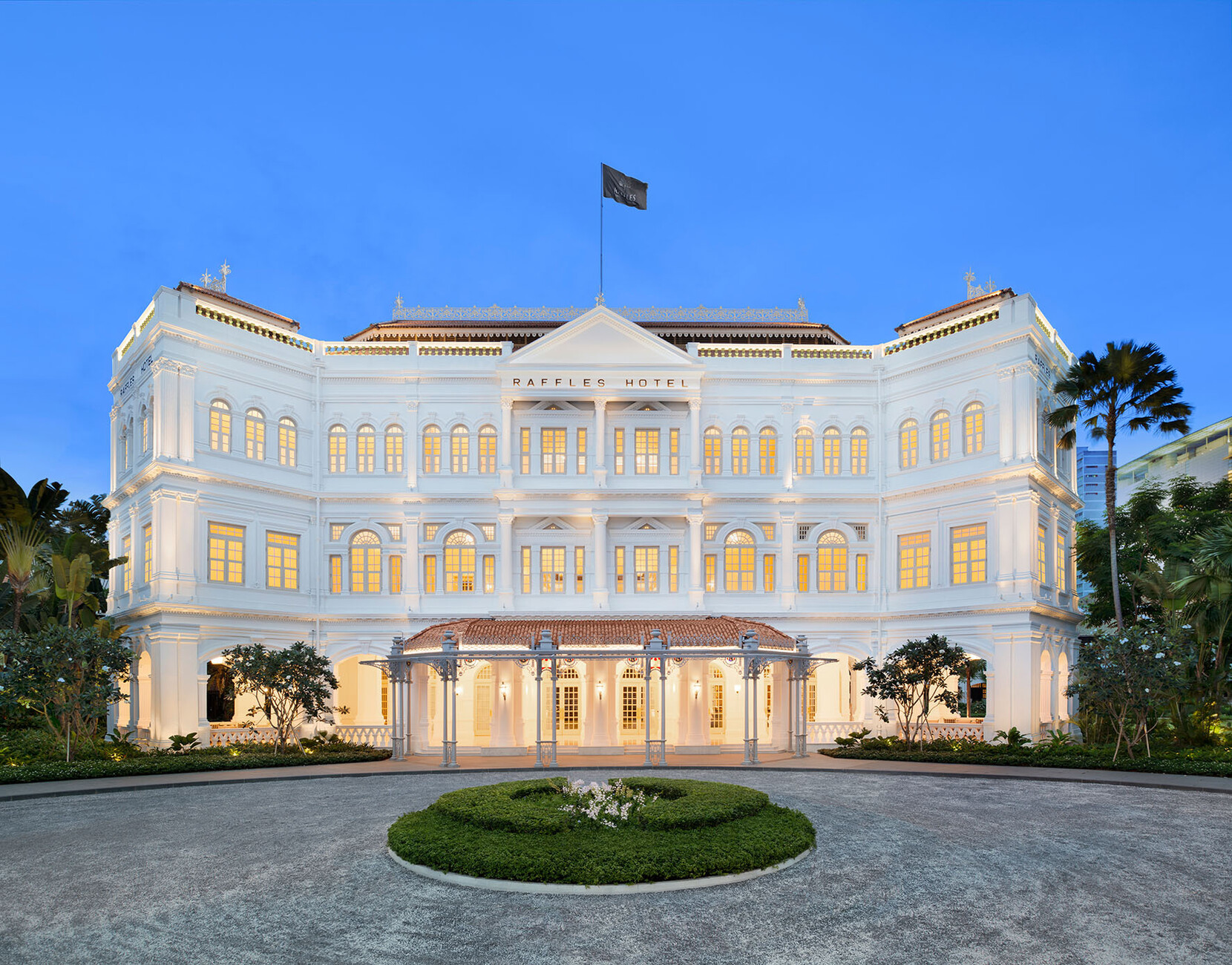Graceful contrasts
Choosing modern interior design for historical architecture such as the colonial style is a great challenge: it is necessary to develop a concept for a harmonious interplay that both takes up the history of the place and adds a new touch to it at the same time. Patrick Jouin and Sanjit Manku have taken on this task for the Raffles luxury hotel in Singapore. The hotel was founded in 1887 and named after Sir Thomas Stamford Raffles - the British statesman was a key figure in the founding of the modern state of Singapore, at that time a crown colony. The eventful history of the now independent republic and the culinary treasures of the island and city state fill the lively atmosphere of the Raffles Hotel. Guests can take a seat on Pedrali furniture in the Bar & Billiard Room, which is also home to chef Alain Ducasse's Osteria BBR. Studio Jouin Manku chose the "Ester" bar stools and armchairs, designed by Patrick Jouin himself: thanks to an upholstered polyurethane foam shell, elastic straps and legs made of die-cast aluminium, these offer the perfect combination of comfort and elegance. The monolithic shape without cut-outs makes the armchair look like it was cast from one piece, while the rounded backrest creates smooth transitions. On the outdoor terrace, on the other hand, it becomes airy: CMP Design have given the "Panarea" seating collection a pleasant lightness with a handmade weave for Pedrali. The wide backrest and the comfortable seat-cushion in dry-feel polyurethane foam also guarantee long evenings in a social setting.
Interview with Studio Jouin Manku:
Anna Moldenhauer: The Osteria BBR at Raffles Hotel unites influences that are already very strong when viewed individually – culinary highlights from Singapore and the Italian Riviera, modern as well as traditional influences in the interior design and a historical architecture with deep roots. How did you manage to unite these forces into a coherent overall picture?
Studio Jouin Manku: In our project, we placed the kitchen at the centre of an iconic space, the former Pool Room. This is a small pavilion on the grounds of the hotel, but not really connected to the main building. It can be spotted from all sides, from the street and from the garden. Instead of hiding the kitchen, we played with the conditions of the historical renovation and the space. To fill this huge volume and at the same time accommodate extractor bonnets, we created a sculpture, a Mediterranean fish, that hovers above the space. Everything else takes place around the kitchen island - it brings life into it.
What first impression do you want to give guests with your design when they enter Osteria BBR?
Studio Jouin Manku: We want to convey the idea of energy – that it is a very convivial place, the idea of fresh food prepared in front of the guests, of a kitchen that mixes the gastronomy of the Mediterranean and where we are all together in one space to cook and enjoy. A place full of energy, lively, colourful, casual and sophisticated at the same time.
Why did you choose the "Ester" chair, which you designed Patrick, for Pedrali, for the interior?
Studio Jouin Manku: For this very important project, in this mythical place and for Alain Ducasse, one of the greatest chefs in the world, we want to ensure a high level of comfort. In this sense, "Ester" by Pedrali is a perfect choice. We have been working with Alain Ducasse for many years and this chair has a very strong symbolism: it contains a shared history between Alain Ducasse, Pedrali and us. We are guided in our choice of furniture by the desire to convey joy visually.
What was important for you in the colour design?
Studio Jouin Manku: The space does not allow us to change the floor or ceiling, so we decided to play with the interior. The monumental object of the fish sculpture brings in blue and silver tones to which we wanted to mix warm colours - like saffron, mustard or blood orange. We used different materials and fabrics in this project to create something that vibrates.
In preparation for this interview, I learned that it is important to you that guests relax when they visit your projects - drop their shoulders, so to speak. How did you achieve this at Osteria BBR?
Studio Jouin Manku: When we design a project, the most important thing for us is not to create a static space, but to evoke emotions in people. Adjacent to a lush garden, we wanted to create a sense of wonder in this very colonial space when you enter. Starting from the spectacular sculpture glittering on the ceiling, we wanted people to discover the social life in it - the culinary, the social life, the sharing. So in the middle we have the theatre and around it the comfort. From there, you gradually move to the back of the space and discover a cosy bar.
Sanjit, you are Canadian, Patrick is from France – together you work on international projects. How would you describe your style?
Studio Jouin Manku: That is a difficult question. We are looking for the miraculous, for a wonder for the person who enters the spaces we design. There is always a relationship with the human body and the human spirit. We try to harmoniously combine the space and the people. And since every space is different, something new emerges every time.

